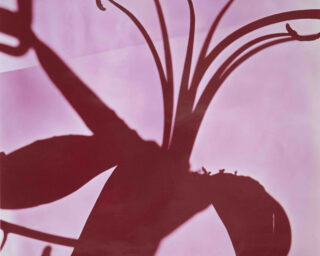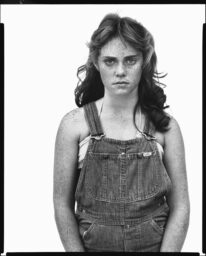Eugénie Shinkle on Adam Broomberg and Oliver Chanarin Spirit is a Bone
The images in Adam Broomberg and Oliver Chanarin’s Spirit is a Bone were made using advanced facial recognition software, which gathers data from four separate lenses and builds a model of the face according to the configuration of the skull—the spaces, unique to each face, between eyes, nose, and mouth. The resulting three-dimensional images, all depicting citizens of Moscow, are data visualizations rather than photographic portraits per se. Usually taken without the subject’s knowledge, they are euphemistically termed “non-collaborative” by the Russian engineers who designed the software used to create them.
The book takes its title from Hegel’s claim, in The Phenomenology of Spirit, that “spirit is a bone”—that the essence of the human subject is revealed not through the physiognomy of the face, but through the enduring material of the skull. Both facial recognition and forensic anthropology also rely on the shape of the skull to establish identity. The fleshy parts of the face are said to be capable of deceit through camouflage, decay, or shifts in expression; the bony structure beneath is not.
Similarly, the cameras that generate these images treat the tissue of the face as a thin layer of ephemeral material—a mask worn over the skull. Glossy and slightly elevated from the matte, white ground of the page, Bloomberg and Chanarin’s portraits seem just as easily stripped away from their substrate. Identified only by labels based on each individual’s position in Moscow society—machine operator, philosopher, city dweller—they recall attempts by earlier photographers, such as August Sander, to use the photograph as a tool for sorting and classifying. But here these designations are as inconsequential as the facial features of the subjects they name.

The subjects of these portraits wear the unguarded expressions of those who are unaware of the camera, but the odd, oblique angles and heavy foreshortening make their faces difficult to recognize. The distortions introduced by the software—features warped and doubled, lips clamped tightly—appear grotesque to human viewers, but not to the algorithms that will read the data the images contain. These portraits were not intended for human eyes.
Spirit is a Bone offers a biting commentary on the predictive and preemptive use of imaging technologies by military and law enforcement agencies. Facial recognition is part of a global surveillance industry, generating images that are gathered by the state for future use against its own citizens. The resulting archives are political instruments designed to manage the social body—in this case, as Eyal Weizman remarks in conversation with the artists, by “interrogating the future before it is materialized.”
Barthes’s famous dictum about the portrait photograph as a “closed field of forces” is couched entirely in the personal pronoun “I.” For Barthes, the portrait was a form of social exchange. “Non-collaborative” portraiture belongs to a new field of forces, in which the face is no longer a living expression of humanity, but yet another digital trace left by the subject in a society increasingly preoccupied with the management of risk and the possibility of threats from within.
EUGÉNIE SHINKLE is reader in photography at the Westminster School of Media, Arts, and Design in London. She lectures and publishes widely about a number of areas related to photography, including fashion, landscape, globalization, and body/technology relations.
Adam Broomberg and Oliver Chanarin
Spirit is a Bone
MACK Books • London, 2015
Designed by Adam Broomberg and Oliver Chanarin, with Grégoire Pujade-Lauraine
6 1/2 x 8 1/4 in. (16.4 x 21 cm) • 240 pages
134 black-and-white images • Hardcover
mackbooks.co.uk























